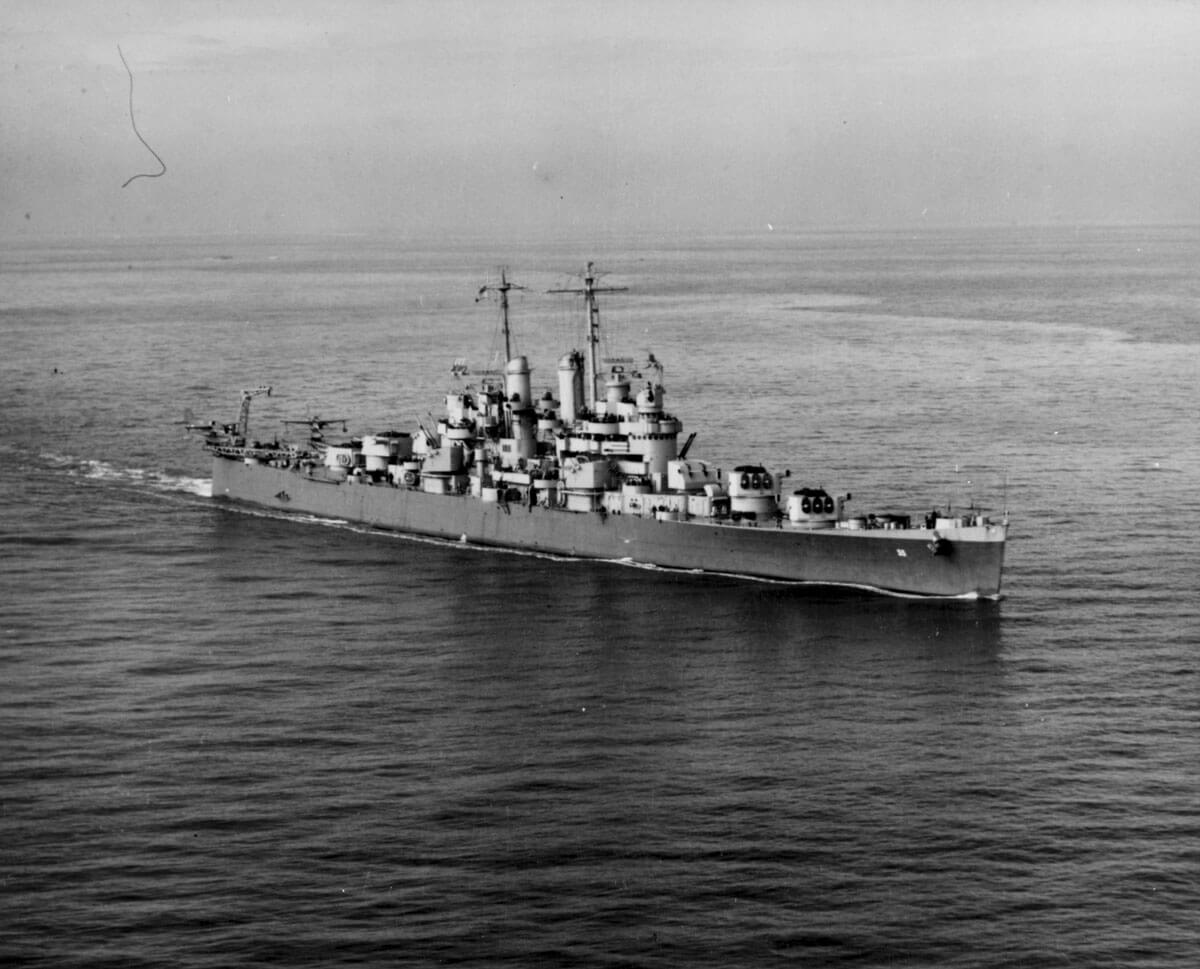Cleveland-Class Cruisers Asbestos Exposure

Cleveland-class cruisers were the most numerous of the American WWII cruisers, with a total of 38 completed by the end of the war. They first entered combat in 1943, mostly in the South Pacific. The design was modified several times to meet the needs of the American military, and some of the ships were recalled into service after the war.
History of Cleveland-Class Cruisers
The basis of the design for the Cleveland-class took form as early as 1938, when the military began to develop Brooklyn-class cruisers that would satisfy the weight limits of the 1936 London Naval Treaty. When World War II broke out, however, these limits were abandoned. Thus, though the first Cleveland-class cruisers were light and met the treaty agreement, the U.S. soon entered the “cruiser race” and set out to build more powerful ships.
The Navy began to modify the design of the Brooklyn-class to construct the Cleveland-class in 1939. The idea was not to waste resources on an entirely new design, but to take what worked well in the Brooklyn cruisers and increase ship weight and armaments. Since the Japanese and German navies were ramping up their own design efforts, the U.S. Navy aimed to strike a balance between agility and increased power.
In the end, wartime shortages and evolving needs meant that the Cleveland-class took on more and heavier equipment over the course of the war, eventually becoming quite top-heavy. In 1942, before the cruisers went into service, their design had already been partially modified to address this issue. It should be noted that the term “light cruisers” refers not to the ships’ displacement or weight, but to the lighter guns they carried. Cleveland-class cruisers and ships of other classes that carried larger armament were deemed “heavy.”
Twenty-two Cleveland-class cruisers saw service in WWII. Most of these served in the Pacific theater beginning in 1943, acting as a defensive screen around aircraft carriers. Some performed shore bombardments, particularly in Okinawa. USS Cleveland—name-ship of her class—played a key role in Operation Torch (the Allied invasion of North Africa). She departed from Norfolk to support the fleet landing in Fedhala, in French (German-controlled) Morocco. The U.S. military generally limited its involvement in North Africa, and the USS Cleveland soon left Morocco to join the South Pacific fleet.
After the war most Cleveland-class cruisers went into reserve or were laid up entirely. The USS Manchester was the only exception and served extensively in the Korean War. In the late 1950s several Cleveland-class cruisers were converted to guided-missile cruisers and eventually served in Vietnam in their modified form.
Technical Specifications
Cleveland-class cruisers were nearly the same length as their forerunners, the Brooklyn-class, but their specifications included a differently designed hull and an increased armament capacity.
- Length: 610 feet
- Displacement: 11,744 tons
- Complement: 1,285
- Armament: (12) 6”/47 guns (four triple turrets); (12) 5”/38 guns (six double positions); (28) 40mm guns (4×4, 6×2), (10) 20mm guns; four aircraft
- Maximum Speed: 32.5 knots
- Power: 100,000 hp
- Propulsion: Four boilers, four steam turbines, four shafts
Asbestos Exposure and Cleveland-Class Cruisers
Building more powerful but still agile WWII ships such as the Cleveland-class cruisers meant cutting weight wherever possible. One of the ways the Navy achieved this was by using lightweight asbestos insulation. For every pound saved in ship insulation weight, more weapons and/or more fuel could be carried.
A typical WWII cruiser contained roughly 125,000 pounds of asbestos insulation on pipes and machinery. Asbestos insulation was concentrated in boiler and engines room, where equipment such as boilers, turbines, pumps and valves were located. But asbestos-containing materials were not limited to boiler and engine rooms. Asbestos insulation ran throughout Navy ships and hundreds of different asbestos products were found above and below deck. From fire proof doors and cement board to electrical components and galley equipment to deck materials and winch breaks and much more, asbestos was omnipresent on WWII-era Navy ships.
The companies that manufactured and sold asbestos products concealed asbestos health risks. These companies alone—and not the Navy—are responsible for Navy veterans developing asbestos diseases like mesothelioma and lung cancer.
Veterans diagnosed with asbestos cancer may be eligible for compensation from asbestos companies. Belluck & Fox, LLP is dedicated to helping mesothelioma victims and has successfully represented many Navy veterans. We recently secured a verdict of over $32 million on behalf of a Navy vet with mesothelioma.
Learn how we can help you and your family during a free case review.
Sources:
- History of War: Cleveland Class Light Cruisers
- History of War: USS Cleveland (CL-55)
- Military Factory: USS Cleveland (CL-55) Light Cruiser (1942)
- GlobalSecurity.org: CL-55
